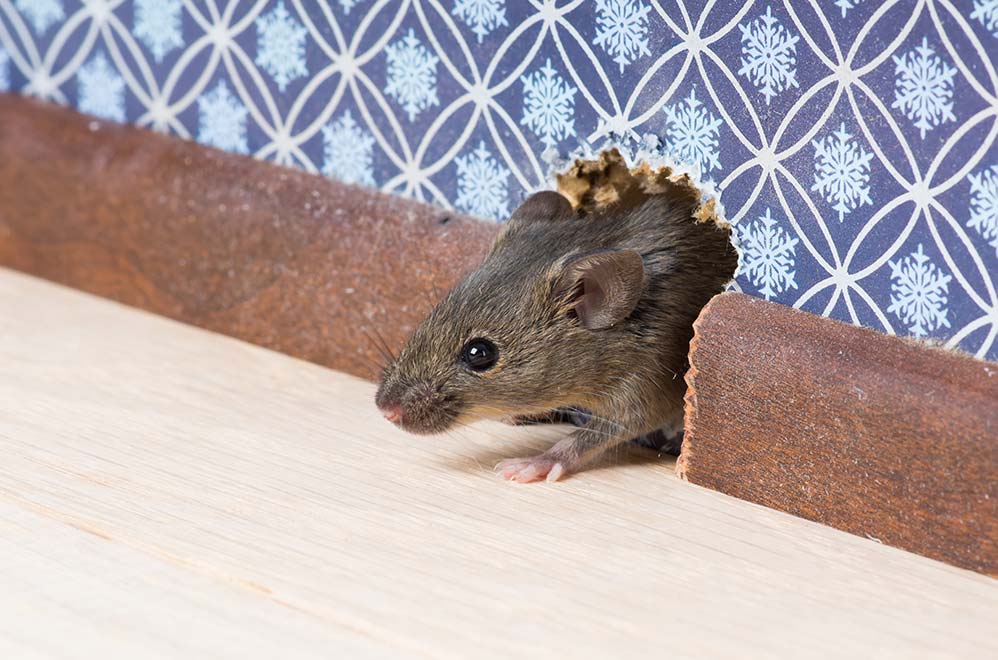|
Most people don’t give a second thought to pests. For the most part, when they’re out of sight, they’re out of mind. A new event seeks to change that. The first-ever World Pest Day was started on June 6, 2017 to get people thinking differently about bugs and vermin. The CPCA (China), NPMA (USA), FAOPMA (Australia) and CEPA (Europe) wanted to shed light on the importance of protecting homes, families, food, lives and businesses from various insects and rodents. These creatures are more than just a nuisance, and while you may not want to celebrate the day with cake and ice cream, you should care more about the reasons driving World Pest Day. The Rodent Scourge
Fairy tales and animated films suggest that rats and mice are adorable, magical creatures. While carefully controlled, domesticated rodents can be safe, the uncontrolled variety can cause considerable damage to crops, infrastructure and human health. Some species have adapted so well to coexisting with humans and their environments that they’re thriving. These animals can multiply exponentially if left unchecked, and like all living creatures, they require food. In the wild, away from human civilization, this isn’t as big of an issue, but coexisting with humans has driven them to seek out food supplies that humans also eat. These pests can quickly contaminate and damage food and water sources. The scale of the problem can be as small as an individual home to as large as entire regions. The intrusion of rodents into human food and water supplies poses a serious risk to health. Rats and mice also have a habit of gnawing anything and everything. This causes damage to various infrastructures, but one of the more susceptible victims of rodent malice is electronic equipment. It’s estimated that these pests set back work productivity by eight days a year based on the destruction they wreck. While contaminated food and damaged infrastructure is unpleasant enough, one of the most dangerous aspects of rodent populations can be the diseases they carry. It’s estimated that rodents can claim responsibility for more deaths than all wars in the past 1,000 years. These pests can carry the following diseases:
Minimizing your individual risk of rats and mice can be facilitated by cleaning up trash, sealing up cracks in your home’s foundation, closing garbage bins, ensuring proper food storage and refraining from feeding birds large amounts of seed. The Growing Threat of Mosquitoes There are over 3,000 species of mosquitoes; however, three species are primarily responsible for most of the diseases humans contract from them. Approximately 1 million people die each year because of mosquitoes. The bite itself is inconsequential, but the diseases these pests transfer are deadly. Almost half the human population is at risk of malaria, and 300–600 million people are infected each year. Mosquitos are also responsible for the following diseases:
Because of their reliance on water for breeding, eliminating or disrupting standing water sources is important to keep mosquito populations in check. Pesticides can also be used to eliminate the bugs. Unfortunately, scientists warn that climate change may exacerbate the current mosquito problem. Mosquito prevention is key to minimizing these pests. The following are steps the average person can take:
The Encroaching Cockroaches Another bug that that World Pest Day is trying to shed light on is the cockroach. These bugs are estimated to be 280 million years old and have around 4,000 different species. If you happen to see one, chances are there are many others just out of sight. Cockroaches are incredibly hardy and can live in harsh environments. They tend to be attracted to warm, moist areas, so sewers, pipes, and garbage make ideal living situations. They can live for a month without food or even a head for that matter. These bugs aren’t picky when it comes to food and eat just about anything, from other cockroaches to garbage to animal feces. Because of these unhygienic feeding habits, these pests spread several foodborne illnesses such as salmonella and cholera. The body parts, saliva and feces of cockroaches can also trigger allergies and cause asthma attacks. Preventing cockroaches requires a multi-pronged approach. One of the most important things you can do is keep your living space clean and dry. This is especially important if you suspect you have a cockroach infestation because cleaning helps to remove their food sources and waste produced by the bugs themselves. Another step is to seal cracks in your walls and foundations to prevent them from gaining access inside. While your home is undergoing these repairs, it’s also a good time to fix water leaks, because these insects are attracted to damp places. If you find yourself with a cockroach infestation or a problem with any of the other pests, calling a professional exterminator can help you get a clean slate in your fight against these bugs and vermin. The Goals of World Pest Day For many people, these pests are mostly invisible, but that doesn’t change the fact that they can cause irreparable damages to the lives of people around the world. These infestations can drive up food prices, disrupt economies and kill millions. World Pest Day seeks to raise awareness of these issues. There are several things you can do to help address the problems caused by these pests:
For billions of people around the globe, pests and bugs are more than just an uncomfortable collection of creatures. They wreck serious havoc on lives and wellbeing. By being aware of these problems and supporting World Pest Day on June 6, you can have an impact on improving the quality of life for many people.
8 Comments
|
AuthorI really enjoy researching and writing about pests. The more we know about bugs, the easier it becomes to control them. Categories
All
Archives
February 2024
|
|
© 2021 Bug Ninja Pest Control.
All rights reserved. |
Services |
Contact |
|



 RSS Feed
RSS Feed

